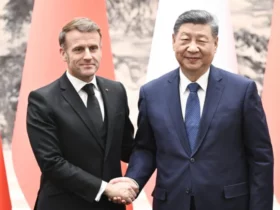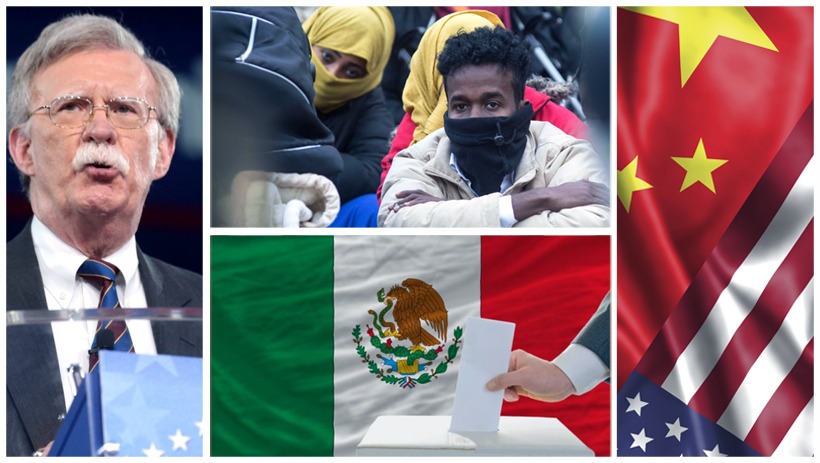The rise of China as a global AI power is bound to reshape the geopolitics. But it’s not a zero-sum game.
The rise of China as a global AI power is bound to reshape the geopolitics. But it’s not a zero-sum game.
By Mehmet Enes Beşer
In ten years, China has evolved from a wannabe imitator to a genuine leader in the international artificial intelligence (AI) race. Where China was once a technology imitator, today it is reshaping the architecture of innovation and setting the pace for AI advancements across sectors—from facial recognition and fintech to autonomous vehicles and defense technologies. While much of the global story frames the rise of China as a text-on-me challenge to Western technological dominance, the reality is more nuanced. China’s AI superiority is not simply a national triumph or a geoeconomic threat; it is also an emergent opportunity for its allies and partners, particularly in the Global South, to leapfrog development, remake their economies, and secure a position in the coming era of digital rule.
The origin of China’s AI superiority lies in a combination of variables that are difficult to quickly replicate. Huge state-led investments, a positive data environment, highly skilled technical talent, and the capacity to implement technologies at scale have endowed China with a special advantage. In its “Next Generation Artificial Intelligence Development Plan,” released in 2017, China issued the aim of leading the world in AI by 2030. Now, that aim seems not just possible but already well in motion. Chinese companies such as Baidu, Alibaba, Huawei, and SenseTime are at the forefront of AI innovation, second only to American tech giants. The country is also the best when it comes to AI-related patents, academic research, and hardware production for AI-specific purposes.
China’s AI strategy is not completely closed-door, though. In recent years, Beijing has been exporting its AI prowess in the form of digital infrastructure projects, cloud services, surveillance tech, and smart city solutions. The Digital Silk Road, a spin-off of the Belt and Road Initiative, is quickly becoming a vehicle of spreading Chinese AI technology across Asia, Africa, Latin America, and even into parts of Europe. Such diffusion is decried in Western circles as technological imperialism, but for most developing countries, it is a lifeline. For thin governments with thin budgets, low-cost AI options—be it agricultural, urban planning, or education—can be a game-changer.
Noting that there is the strategic advantage for China’s friends. Unlike the United States, which has more and more confined its high-end technologies from export, China offers a more open model of technological diffusion. Those countries that align economically or diplomatically with Beijing get access to cutting-edge AI solutions without having to navigate the regulatory and ideological barriers typically imposed by Western firms or institutions. Not that Chinese technology isn’t strings-attached—just in different ways: fewer political strings, more room for localization, and faster implementation cycles.
Moreover, China’s rise in AI is also changing the standards of global governance for technology. With its engagement in international organizations such as the ITU and ISO, China is actively driving forward standards that are consistent with its own interests—such as state control, data centralization, and AI for infrastructure optimization. For fellow allies with similar models of governance or strategic interests, this offers a chance to adopt a digital model that is pragmatic and attuned to non-Western realities. While Western nations remain preoccupied with ethical frameworks and concerns about privacy, China is providing solutions—imperfect as they may be—that are centered on deployment and functionality.
Detractors say China’s model has the potential to export authoritarianism or generate digital dependencies. These are valid questions and they must be questioned. And to term China’s leadership in AI as somehow malignant diminishes the autonomy of their partners. The countries entering into dealings with Chinese AI firms are not hapless consumers—they are active negotiators, entering into contracts, setting terms, and often applying Chinese technology to local problems. And then, most of these countries have been systematically shut out of Western innovation streams. For them, China’s model of AI is not a second-best option—it’s often the sole option that makes sense.
Surprisingly, China’s AI allies are not limited to autocratic regimes or ideologically aligned states. Democracies such as Malaysia, Indonesia, Kenya, and Brazil are increasingly considering collaborations with Chinese technology firms, attracted to affordability, agility, and speed. These countries are not interested in emulating China’s political system; they are interested in modernizing, competing, and asserting digital sovereignty in an age of global hegemony by a few technology superpowers. Here, China’s AI success turns into a common good—a negotiating tool for allies to break through technological dependence on the West and script their own digital futures.
Conclusion
The rise of China as a global AI power is bound to reshape the geopolitics. But it’s not a zero-sum game. For China’s allies and friends, this new development can be not a threat, but an advantage. In a world where technological innovation comes to decide economic competitiveness, political legitimacy, and global power more and more, access to high-end AI systems is no longer a luxury, but a requirement.
Rather than treating China’s leadership in AI as something to be contained, it may be more helpful to view it as a new axis of development—a possibility for emerging economies to accelerate their digital transformation, reframe their policy paradigm, and become more actively engaged in the governance of technology globally. The challenge is not to counter Chinese AI exports but to engage them critically, pragmatically, and in terms of local interests.
If the allies can balance this way—leverage the strengths of China while maintaining their autonomy—they can benefit from a shifting technological order in which innovation is no longer the sole monopoly of the West. China, in turn, may find that a cooperative AI strategy, built on mutual gain and not dominance, wins not only regional power but long-term global legitimacy.
In the age of AI, power is not just a question of who designs the smartest algorithms—but of who distributes them, who adapts them, and who benefits from their application. In this game, China’s allies have more to gain than they know—if they play wisely.

















Leave a Reply